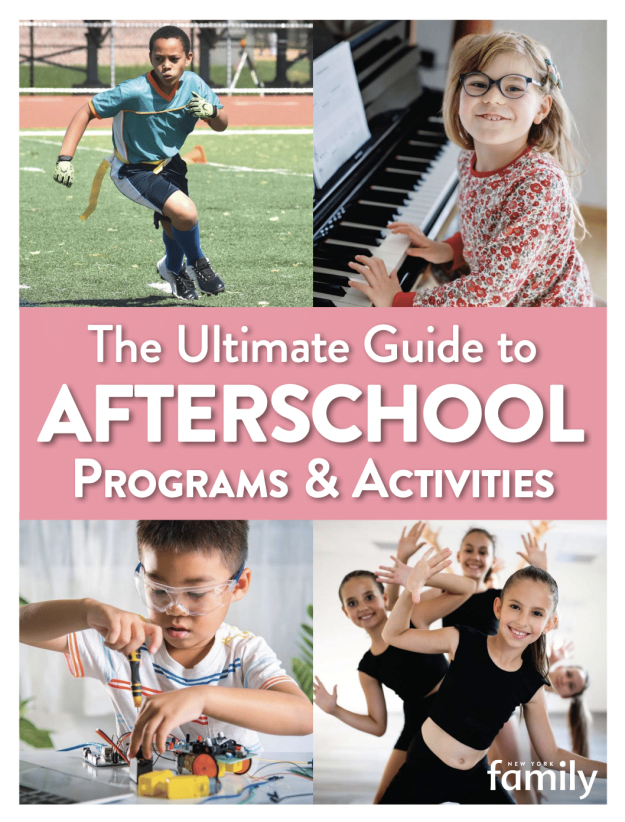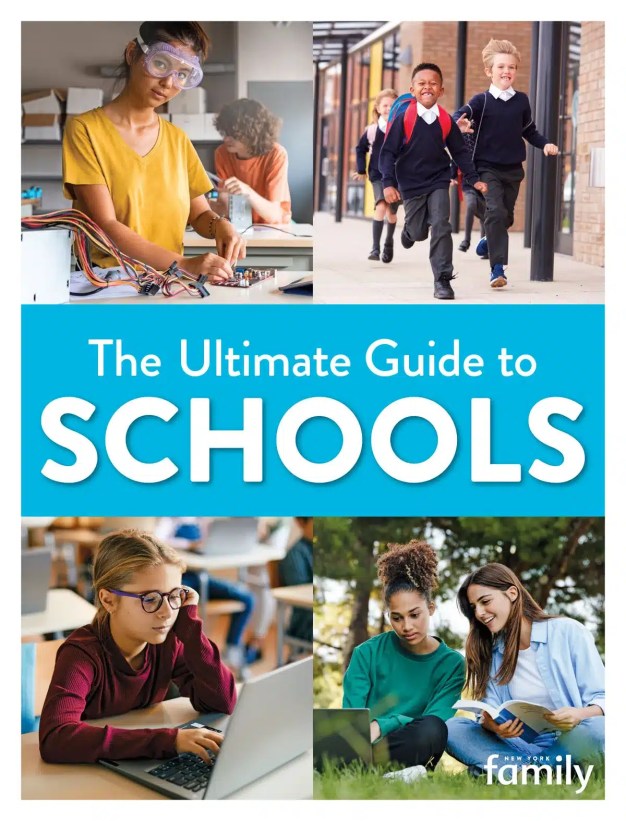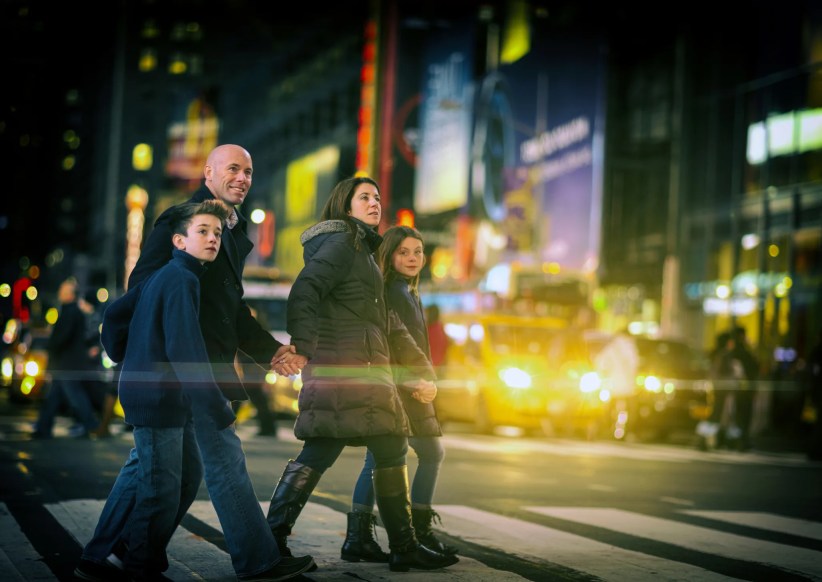A New York City mother allowed her 9-year-old son, Izzy, to take rides on a subway and a public bus — alone — to his home in 2008. In her column for The New York Sun, Lenore Skenazy described how her young son took an hour-long trip home on those two forms of public transportation.
As word spread of her decision, Skenazy and her son were interviewed by Ann Curry on NBC in which Izzy said the trip “made him feel grown up.” Seated across from Curry was a “parenting expert,” Dr. Ruth Peters, who told Skenazy it would have been safer if she had followed her son on his trip home, or if Izzy had taken public transportation with a group of friends.
Other national news sources, like Fox News and MSNBC, also picked up on the story and interviewed Skenazy, who even answered questions from reporters in China, Australia, and Israel about the incident. By the end of all the interviews and public discussions about her parenting, Skenazy had been dubbed by the media as “America’s Worst Mom.”
In her defense, Skenazy penned a book, published in 2010, called “Free-Range Kids: How to Raise Safe, Self-Reliant Children” (Jossey-Bass), which has turned into a national movement that is still going strong eight years later. Making fun of the 21st-century “helicopter” parents who do everything for their kids, “Free-Range Kids” extols the principle that children must learn to do things independently in order to thrive in the real world by themselves. (Her column “Rhymes with Crazy” runs twice a month in our sister publication, The Brooklyn Paper.)
The drastic decrease in crime
One of Skenazy’s major points is the drastic decrease in national crime since reaching its pinnacle at the beginning of the 1990s.
Using updated statistics about crime trends from 1993 to 2005, Skenazy writes that there is a “36 percent decline in homicides of children under the age of 14” and a “60 percent decline in homicides of children ages 14–17.” She adds that from 1993 to 2003, there has been a “79 percent decline in juvenile sex victimizations trends.”
In 2014, JAMA Pediatrics published a study explaining the decrease in crime against children, despite recent headlines about school shootings. The main author of the study, sociologist David Finkelhor, believes technology plays a major factor in violence reduction.
“More children have cellphones,” he observes, “which means more can call for help if they sense danger.”
Finkelhor and his co-authors have other theories about why violence against children has declined. One idea is that “public health programs specifically designed to curb violence against children work,” such as anti-bullying techniques and domestic violence awareness.
Another hypothesis is Skenazy’s book is that more people are on psychiatric medicine that reduces aggressive behavior. According to an 2014 article written by CNN’s Jen Christensen, 7.8 percent of children were taking psychiatric medication in 2011 and “more adults are taking medication for depression and anxiety, which may also reduce family violence.”
The 24-hour media cycle
Skenazy believes that due to 24-hour news channels such as CNN and television shows such as “Law & Order,” viewers are perpetually being shown images of people and places affected by violence, which make audiences falsely believe that constant crime is occurring everywhere.
David Ropeik from The Washington Post wrote in a March article that “the statistical likelihood of any given public school student being killed by a gun, in school, on any given day since 1999 was roughly 1 in 614,000,000. And since the 1990s, shootings at schools have been getting less common.”
A television producer admitted to Skenazy that programs hook viewers by inspiring fear, which parents then are subconsciously thinking about in their daily lives. One television celebrity who inspires such fear is John Walsh, whose 6-year-old son, Adam, was abducted by a stranger in 1981 and beheaded. His severed head was found in Vero Beach, Fla. To help other parents find their abducted children, Walsh created the popular television show, “America’s Most Wanted” (1988–2012), which was responsible for the arrest of hundreds of criminals.
Skenazy writes that Walsh also co-founded the National Center for Missing and Exploited Children, but he never explains in its statistics that many missing children are usually runaways or children abducted by family members.
Consequences of sequestering our children
As a result of keeping our children safe, the U.S. has become a culture where children are driven everywhere, even to their own bus stops for school.
“Forty years ago, the majority of the U.S. children walked or biked to school. Today about 10 percent do,” Skenazy observes. “Meantime, 70 percent of today’s moms say they played outside as kids. But only 31 percent of their kids do.”
If we stop driving our kids, there will be less air pollution, and kids will be outside in nature. As Skenazy writes, “Being in nature is important for kids. It nurtures curiosity and independence and a connectedness to time and the earth.”
So what are some of the effects of keeping our kids indoors and in cars? Here are some statistics from the Centers for Disease Control and Prevention and “Free-Range Kids”:
• Childhood obesity has tripled since 1970.
• Children are now getting Type 2 Diabetes, an illness that used to only be diagnosed in adults.
• Between 5 and 10 percent of all kids under the age of 18 will experience depression.
• Many kids arriving on college campuses today are called “teacups” by administrators, because “a lifetime of overprotection has made them very fragile,” writes Skenazy.
How to help our children go free-range
Skenazy recommends parents accompany their child on his first walk to school or assist him on his first chore at home to allay their own fears and ensure their children are safe and doing a task correctly. Then, she says, parents should:
Make your kids walk and play outside. Let your children know they are capable of doing things without you. Give them responsibility inside and outside of the home. Besides having them clean dishes and make their beds, have them take the family pet to the vet for its annual exam.
Ask your child to cook dinner. Have them walk to the supermarket to purchase the ingredients, and then have them prepare dinner for the family. Assist them if they ask for help, but don’t overprotect them by not letting them turn on the stove or use knives.
Teach online safety and trust them. Instead of tracking your kids on the internet and blocking their content, talk to them about the dangers of connecting with strangers online. Let them know that they should never make a plan to meet an unknown person they “met” on the internet without your permission.
Teach your children how to protect themselves if a stranger does approach them in an inappropriate manner. Practice and role play a three-part approach — have them throw their hands in the air, scream, and then run.
Most importantly, let your child fail at something. Parents are so scared that their children will react badly when they lose that kids get trophies nowadays just for participating in activities. When a child fails, he learns something about himself, but it also opens a door to new opportunities. If kids don’t try and fail, they will never learn what they are good at or what they enjoy doing.
As Skenazy so aptly puts it, “Kids are competent. Kids are capable. Kids deserve freedom, responsibility, and a chance to be part of this world, not cooped up like, well, chickens.”
Allison Plitt lives in Queens with her 12-year-old daughter and is a frequent contributor to this publication.





















